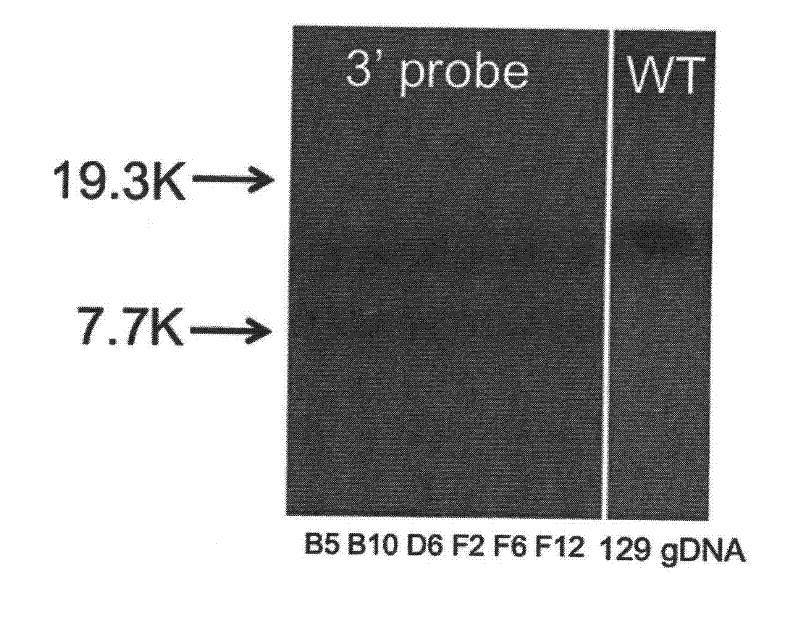Establishment of Kinase protein Akt1 conditional gene knockout mice model and application
A kinase protein, gene knockout technology, applied in the field of transgenic, can solve problems such as the inability to study the development of late embryonic organs and the regulation of glucose metabolism
- Summary
- Abstract
- Description
- Claims
- Application Information
AI Technical Summary
Problems solved by technology
Method used
Image
Examples
Embodiment 1
[0054] Establishment of a conditional knockout model of the kinase Akt1 protein gene
[0055] 1. By constructing a gene targeting vector, see figure 1 ;
[0056] 2. Transfect the above vector into embryonic hepatocytes (ES), and screen the ES cell clones of homologous recombination by Southern blot hybridization, see figure 2 ;
[0057] 3. After blastocyst injection, the homologously recombined ES cells obtained in step (2) are implanted into the uterus of pseudopregnant mice, and chimeric mice are obtained after the offspring are born;
[0058] 4. Chimeric mice were further mated to obtain Akt1 knockout mice.
Embodiment 2
[0060] Establishment of a mouse model of cardiac hypertrophy in Akt1 knockout mice
[0061] The Akt1 gene-deficient mice obtained in Example 1 had no obvious abnormality at birth, and the combined knockout mice of Akt1 and Akt2 genes all died 1 month after birth; compared with wild-type control mice, the combined knockout of Akt1 and Akt2 genes In addition to the obvious thinning of the myocardial wall, loose myocardial structure, and dilated right ventricle ( Figure 4 ), suggesting that Akt1 and Akt2 gene knockout mice can be used as a model of diastolic cardiac hypertrophy.
PUM
 Login to View More
Login to View More Abstract
Description
Claims
Application Information
 Login to View More
Login to View More - R&D
- Intellectual Property
- Life Sciences
- Materials
- Tech Scout
- Unparalleled Data Quality
- Higher Quality Content
- 60% Fewer Hallucinations
Browse by: Latest US Patents, China's latest patents, Technical Efficacy Thesaurus, Application Domain, Technology Topic, Popular Technical Reports.
© 2025 PatSnap. All rights reserved.Legal|Privacy policy|Modern Slavery Act Transparency Statement|Sitemap|About US| Contact US: help@patsnap.com



